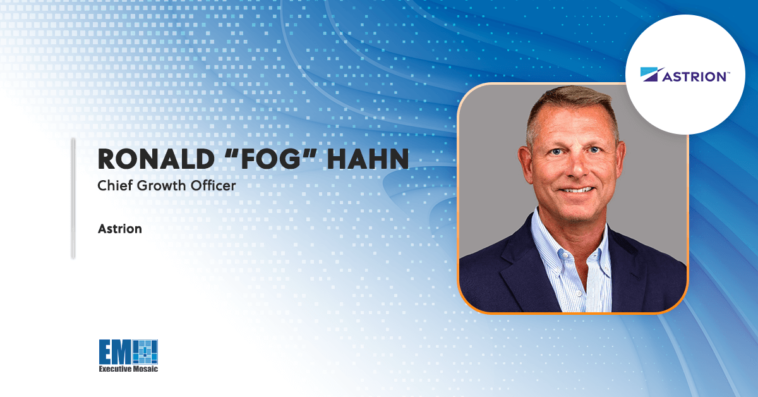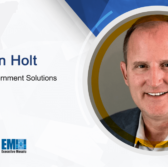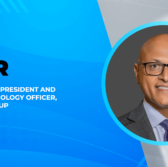Defense and security are the driving forces in the life and career of Ronald “Fog” Hahn — he goes so far as to say they’re a part of his DNA. A two-decade U.S. Marine Corps veteran, Hahn subsequently spent time as a civil servant, serving as U.S. Special Operations Command special operations chief and director of the Joint Electronic Warfare Center. In 2010, Hahn made the “natural progression” into private industry, joining URS, AECOM and Amentum to lead business development and Astrion in December as its chief growth officer.
Hahn is energized by the chance to “shape a new culture and establish unique processes” at Astrion, the combination of Oasis Systems and ERC. He was also drawn to the organization by CEO David Zolet’s sterling reputation, whom Hahn praises as “not only incredibly knowledgeable but also a great leader.”
In this Executive Spotlight interview, Hahn discusses the areas he sees as most ripe for expansion in Astrion’s portfolio, the trends shaping the government contracting market and more.

Artificial intelligence is one of the inarguable major trends driving progress and modernization in GovCon. Make sure to save a spot at the most anticipated AI GovCon event of the year — Potomac Officers Club’s 5th Annual AI Summit on March 21. Featured speakers include Pentagon AI Office CTO Dr. Bill Streilein and the CIA’s Lakshmi Raman, among many others.
How do you set your priorities around limited capture dollars? What goes into the decision making process of what contracts you want to go after?
It’s one of the biggest challenges for those of us in business development or growth. How do you keep your team focused on the right opportunities and ensure you’re resourcing your best chances? The first thing I look at is the pipeline to make sure we prioritize opportunities aligned with our strategy. Companies tend to fall into a “first in, first served” scenario with bid and proposal—or B&P—if you don’t have a set strategy. Regardless of size, this issue persists. You’ve got to keep your B&P dollars focused on the best opportunities for your customers, warfighters, and the company.
The earlier you start the capture process, the better your chances. The government buying cycle can be up to 24 to 36 months. You’re in trouble if you’re not identifying opportunities early and positioning your company successfully. Last-minute bids typically have low win rates. We’re focused on relevant bids and early engagement.
How do you set your priorities in an ever-changing market? What are the key factors you look for when making bidding and/or acquisition decisions?
An exciting aspect of Astrion is combining the proven complementary capabilities of two legacy organizations and introducing our portfolio of offerings to our existing customers.
We see a couple of key growth markets, space is one of them—especially considering the maturing Space Force. When you look at the work we do in the Air Force and then the work that we do at NASA, we see a natural progression toward more exciting opportunities.
Another growth area for us is the Navy. We’ve got excellent capabilities that we’ve been performing for the Navy. We’ll be scaling those capabilities — to expand our support as the need for these capabilities continues to grow.
To give you a top three — along with space and the Navy — the other organization is the Missile Defense Agency. Given the work that we do across the board, missile defense is a growth market for us.
We have strong capabilities inside the federal civilian space, particularly with organizations like the Federal Aviation Administration, and we’ll continue to build those capabilities out. In the Air Force, we do a lot of great work, from science and engineering to cybersecurity support. The same goes for the Army, which has a strong base in Huntsville.
I view growth from both the client and capabilities perspectives. When I look at capabilities, we’re focusing on AI, which is a natural extension of our work in the digital domain. We’re continuing to expand our work in cybersecurity, and testing and evaluation are core capabilities across domains.
What’s the most impactful trend you’re currently seeing in the GovCon market? How are you seeing GovCon organizations respond to that trend?
Our market tends to be cyclic. A few years ago, there was a big push to the lowest price, technically acceptable — or LPTA. While price is always crucial, we’ve mostly moved past LPTA and are focused on solution-based services.
At Astrion, we’re focused on innovating, looking forward, and providing results with impact to the government. We’re looking at how we can improve efficiency and reduce costs for our clients. In a recent major bid, we had 64 key offerings, specifically addressing how our approach benefits the government. The government has become smarter and more discerning over the last decade, focusing on not just what you’ll do but how you’ll do it and how it benefits them.
Our purpose is to “Be the Difference,” which we emphasize when articulating the “how” in our solutions and proposals. It’s not just about what we offer; it’s about how the Astrion Way benefits the government.
This approach ensures that when we enter new markets, we have tangible offerings to bring to the table. It’s not about saying we work hard and care about the mission; it’s about demonstrating results with impact and having a proven track record of making a difference.






